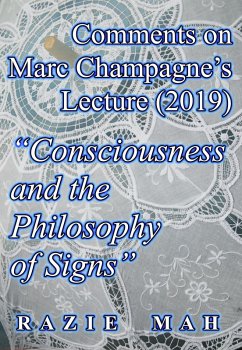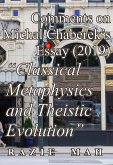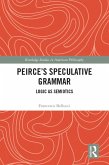Marc Champagne, teaching at Kwantlen Polytechnic University, publishes a book with a wonderful title: Consciousness and the Philosophy of Signs: How Peircean Semiotics Combines Phenomenal Qualia and Practical Effects (2018, Cham: Springer). One year later, he presents a lecture for the Toronto Semiotic Circle with a more humble subtitle: A New Precis. The transcript of this lecture is published in The American Journal of Semiotics (volume 35(3-4), 2019, pages 443-462). The transcript is preceded by a book review by member of above Circle, Jamin Pelkey. Pelkey describes the book as a watershed. It is the start of a new river. Of course, a new river is needed, as many become aware that the discipline of cognitive psychology no longer quenches our thirst for understanding. Is understanding even part of their vocabulary? Champagne steps in, while at the same time, stepping away from analytic philosophy. He relies on the first postmodern, Charles Peirce, in order to construct an understanding of... um... understanding, or at least, what we intuitively understand to be our understanding. Does this suggest that we are standing under the watershed? These comments examine Champagne's argument, in this new precis, using the tools of the category-based nested form and the triadic structure of judgment. It is a bit of a mix. Even Aristotle's hylomorphism comes into play.
Dieser Download kann aus rechtlichen Gründen nur mit Rechnungsadresse in A, B, CY, CZ, D, DK, EW, E, FIN, F, GR, H, IRL, I, LT, L, LR, M, NL, PL, P, R, S, SLO, SK ausgeliefert werden.









